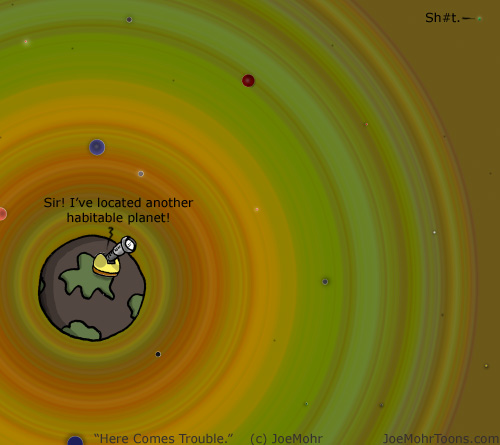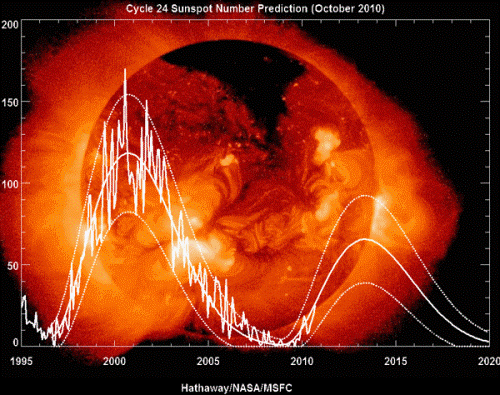
At just before 4:00 am EDT on Saturday, April 27, as NASA’s Swift space observatory was switching between galactic targets, a high-energy eruption occurred in the Constellation Leo. Swift was swift enough to detect the burst and compute its coordinates and the energetic eruption was soon detected by the Gamma-ray Burst Monitor (GBM) on-board the Fermi Gamma-ray Space Telescope.
Believed to be caused by a dying start in a remote galaxy, the burst of light would turn out to be a record-setting gamma ray burst (GRB) “seen ’round the world”.
Designated GRB 130427A, the explosion produced the highest-energy light ever observed from a GRB.It was an event that space scientists have waited a long time to detect.
Describing the burst as “shockingly, eye-wateringly bright”, Julie McEnery, project scientist for the Fermi Gamma-ray Space Telescope at Goddard Space Flight Center (GSFC), in Greenbelt, Md, elaborated:
“The GRB lasted so long that a record number of telescopes on the ground were able to catch it while space-based observations were still ongoing.”
In fact, the high-energy emission lasted for almost a full day — making it the longest-lasting emission from a GRB ever recorded.
About the Two Gamma-Ray Missions
The Fermi Gamma-ray Space Telescope — launched in 2008 — is a gamma-ray monitoring spacecraft operating in low-Earth orbit, and consists of several space-monitoring components chief of which is the Large Area Telescope (LAT). The purpose of the mission is to perform an all-sky survey of various astrophysical phenomena like active galactic nuclei, pulsars and even to detect dark matter. The GBM component is dedicated to gamma-ray burst monitoring.
it was the LAT that recorded a GRB with an energy level of roughly 94 billion electron volts (GeV) — energy levels comparable to some of the energies produced by the Large Hadron Collider in Switzerland in its pursuit of fundamental particles. This energy level is approximately 35 billion times the energy of visible light and is three times brighter that any previous event recorded by the LAT.
Following its initial detection, the GRB was also detected by other ground-based instruments at optical, infra-red, and radio frequencies. This unprecedented, mass-monitoring of a GRB was aided by the Swift satellite’s rapid and precise positioning system. Instruments on-board Swift also determined that the GRB originated from a galaxy 3.6 billion light years from us — a distance considered to be relatively close for a GRB.
The Swift Gamma-Ray Burst Mission, launched in 2004, is a multi-wavelength, robotic spacecraft containing three specialized space telescopes: a Burst Alert Telescope (BAT), an x-ray telescope (XRT) and an ultra-violet/optical telescope (UVOT). it is the BAT that calculates the position and distance of any detected GRB.
More About GRBs
Our universe is a dynamic and violent place (at least within galaxies and galaxy clusters) with such gamma-ray bursts being the most energetic and luminous explosions known. Current theories of GRB hold that the bursts occur when a star begins to run out of fuel and consequently collapse under their own gravitational force. At that stage of collapse, a black hole forms, shooting super-powerful jets of high-energy particles out into the surrounding space at close to the speed of light.
The high-energy jets pass through the remnants of the collapsing star and collide with clouds of hot gas previously shed by the dying star — generating intensely bright ‘after-glows’ that diminish over time.
Within a week of so following the GRB — assuming it is relatively close enough for more detailed astronomical observations — scientists typically detect a supernova at the site of the burst.
Neil Gehrels, principal investigator for Swift at GSFC, commented:
“This GRB is in the closest 5 percent of bursts, so the big push now is to find an emerging supernova, which accompanies nearly all long GRBs at this distance.”
Astronomers working with ground-based observatories hope to detect the underlying supernova that caused the GRB within the next month.
For more information on the Fermi Gamma Ray project and The Swift Gamma-Ray Burst Mission visit the GSFC website.
Some source material for this post (including quotes, photo) comes from the escience news article: ‘NASA’s Fermi, Swift see ‘shockingly bright’ burst‘
Top Image: NASA/Swift/Stefan Immler

